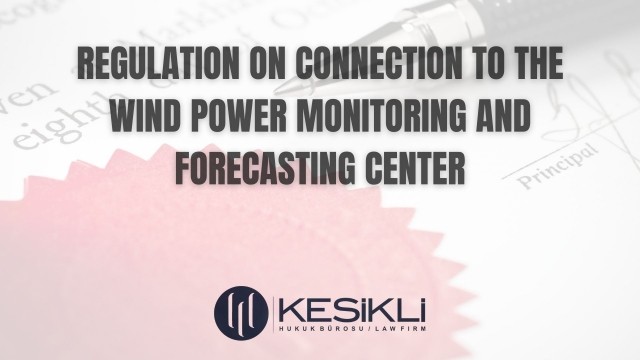Turkey’s Fast Growing Economy And Rising Energy Demand
Turkey is classified as either a developed country or an emerging market economy according to different sources. Turkey stands out as one of the fastest growing economies in the world. Thus, Turkey’s energy demand has been increasing at the same rapid pace as its economy. In terms of increase in demand for natural gas and electricity, Turkey is second only to China.
Turkey is an oil and natural gas producer, but its level of output is not substantial enough to make the country self-sufficient. For the time being, around 26 % of total energy demand is met by domestic resources, while the rest is imported. In fact, Turkey depends on imported gas to generate electricity. Turkey imports 98 % of its natural gas from Russia, Azerbaijan, Algeria, Iran and Nigeria.
In order for Turkey to meet its rising energy demands, enormous levels of investment are required in the fields of electricity, natural gas and oil. The Turkish Government has allowed the private sector to take the lead in financing these investments while creating a favorable investment environment for them.
Regarding natural gas, Turkey must work to secure its natural gas imports by expanding gas storage facilities in order to avoid shortages. Expanding gas storage facilities will also strengthen Turkey ‘s position when negotiating contracts on a “take or pay” basis. The country experienced financial losses in the past due to the obligation to buy prearranged amounts of gas that might have been excessive at the time of trade. After seeking a solution, Turkey’s Natural Gas Market Law set the requirement for gas importers to arrange storage facilities for at least 10 % of their imports. There are also government-led gas storage projects, with the Salt Lake Natural Gas Underground Storage facility being the most important one of all.
EU-Turkey Strategic Energy Partnership: Common Interests On Energy Security
Turkey aspires to be an important gas transit state and an energy hub of the region. Regarding oil transportation, Turkey is already an important transit state. Large volumes of oil are transported by the Baku-Tbilisi-Ceyhan pipeline and the Kerkuk-Ceyhan pipeline, as well as oil tankers sailing through the Straits. However, geopolitical and security issues affecting the pipelines need to be addressed by Turkey in order for it to function as a secure transit state and energy hub.
In order for Turkey to increase its energy security, the country must diversify its energy supply sources. With the Strategic Plan 2015-2019 of the Ministry of Energy and Natural Resources eight themes are underlined and detailed as follows:
- Security of Energy Supply (Strong and Reliable Energy Infrastructure, Optimum Resource Diversity, Effective Demand Management)Energy Efficiency and Energy Saving (Turkey; Making Use of Its Energy in the Most Efficient Way, Improved Capacity for Energy Efficiency and Saving)Good Governance and Stakeholder Interaction (The Ministry with a Strong Corporate Capacity, The Ministry Using Information Technologies Effectively, A Well-Coordinated Ministry)Regional and International Effectiveness (Turkey Integrated with Regional Energy Markets, A Powerful Actor in International Arena )Technology, R&D and Innovation (Indigenous Technology in Energy and Natural Resources, A Result Oriented R&D)Improvement of Investment Environment (Competitive and Transparent Markets, Improved Investment Processes)Raw Material Supply Security Efficient and Effective Use of Raw Material (Efficient and Effective Use of Non-Energy Natural Raw Materials)
The Plan stated that no single country would have a majority share of Turkey’s gas supply imports.
In an effort to diversify the sources of its imported gas, Turkey signed agreements with other energy producers. In this regard Turkey’s interests overlap with those of the EU. Supply security and diversification of sources are priorities for the EU as well. In recent years, decreasing domestic gas production in the EU has led to increased demands for imported gas. Thus finding ways to secure the supply of gas became a priority. The urgency of this issue was made clear in 2006, when the Ukraine-Russia conflict erupted over Russia’s gas prices. When Russia cut off supplies to Ukraine for 3 days, Ukraine began tapping into gas supplies that were supposed to flow to Europe. The result was a gas shortage in some Central European countries.
It was the decisive moment for the EU to build up a strategy that would help member states enhance a functioning internal energy market and develop a new EU gas supply security architecture. The “Energy Union” term has emerged accordingly in the EU meetings. The European Commission published its plan to reduce energy dependence on Russia on May 28, 2014 with the Communication “European Energy Security Strategy (The Strategy).” With this document the European Commission drew attention to the need to bolster the EU’s energy security.
The Strategy identifies areas of energy security that need to be addressed in the short, medium and long term, in order to produce solutions to the current issues. The EC stated that “It is based on eight key pillars that together promote closer cooperation beneficial for all Member States while respecting national energy choices, and are underpinned by the principle of solidarity: Immediate actions aimed at increasing the EU’s capacity to overcome a major disruption during the winter 2014/2015; Strengthening emergency/solidarity mechanisms including coordination of risk assessments and contingency plans; and protecting strategic infrastructure; Moderating energy demand; Building a well-functioning and fully integrated internal market; Increasing energy production in the European Union; Further developing energy technologies; Diversifying external supplies and related infrastructure; Improving coordination of national energy policies and speaking with one voice in external energy policy.”
The European Commission sought alternative ways of avoiding dependance on one supplier. Southern Gas Corridor (SGC) provided a good alternative for the EU to support. Since Turkey plays a critical role in the realization of the project, the EU realized that an establishment of a strategic energy partnership would be beneficial for both parties. The document of Turkey-EU Positive Agenda was the outcome of the meeting that was held on 14 June 2012 in Ankara. It was about enhanced EU-Turkey energy cooperation, and it addressed several important issues. The cooperation focuses on long term perspectives on energy scenarios and energy mix; market integration and development of infrastructure of common interests; global and regional energy cooperation; promotion of renewable energy, energy efficiency and clean energy technologies; nuclear safety and radiation protection.
In its 2020 Energy Strategy document the EC sets out the five following priorities: Achieving an energy efficient Europe; Building a truly pan-European integrated energy market; Empowering consumers and achieving the highest level of safety and security; Extending Europe’s leadership in energy technology and innovation; Strengthening the external dimension of the EU energy market.
Regarding the diversification of external natural gas supplies, the strategy designed by the European Commission states that the EU needs to strengthen its relationship with its existing suppliers as well as opening its doors to new sources. This strategy also underlines the importance of Southern Gas Corridor as a potential connection to the Middle East. When the conditions are met and sanctions regimes are lifted, contribution by Iran, Iraq and Turkmenistan to the enlargement of the SGC is expected as well. However, with the implementation of this strategy no one should expect a drastic decline in imports of Russian gas. Nevertheless, it would have a positive effect on the way to creating an acceptable degree of energy security for the EU.
The target of launching the Southern Gas Corridor first came in view in 2008 with the EU Communication entitled, “Second Strategic Energy Review – An EU Energy Security and Solidarity Action Plan”. The EC’s 2020 Energy Strategy restates the need for the materialization of SGC in order to diversify supply sources. The Russia-Ukraine crisis accelerated that need. Additionally, the availability of natural gas resources, such as the gas reserves of Iraq and Israel gives the 2020 Energy Strategy a higher chance of being realized.
Seeking A Solution: The Southern Gas Corridor (SGC) Initiative And Other Pipeline Projects In The Region
The Southern Gas Corridor (SGC) is planned to connect gas supplies in the Caspian to markets in Europe. It is a huge project that consists of three different gas pipelines that will eventually connect the Caspian with Europe via a 3500-kilometer-long route. The SGC pipeline system has been designed to be scalable to double its initial capacity in the advent that the gas supply increases in the future.
The first part is the South Caucasus Pipeline (SCP) that runs from Azerbaijan to Turkey through Georgia. This one is an existing pipeline; however, the decision to expand it (SCPX) was made on 17 December, 2013. The natural gas is produced offshore in the Caspian Sea Shah Deniz 2 Development. The total length of the pipeline is 691 kilometers.
Before SCP’s development, the Trans-Caspian Gas Pipeline Project was considered. This project envisaged a sub-sea pipeline between Turkmenistan-Turkmenbasi and Baku in Azerbaijan-Sengachal Terminal that would deliver natural gas from Turkmenistan to Central Europe. The first part was Baku-Tbilisi-Erzurum pipeline. It was then going to flow to Central Europe by connecting the pipeline to Nabucco in Erzurum. However, the project was abandoned due to legal dispute with Russia and Iran over Caspian Sea. SCP was preferred instead.
The second part of SGC is the Trans Anatolian Pipeline (TANAP) that runs through Turkey from the Turkey-Georgia border to the Turkey-Greece border. The TANAP will be operated by SOCAR, which currently holds a 58% stake in the project. Southern Gas Corridor Closed Joint Stock Company (SGC – 58%), BOTAS (30%) and BP (12%) are the partners in developing the project. SGC is 51% state-owned and 49% owned by SOCAR. The shareholders agreement for TANAP was signed in March 2015, a few days prior to the start of the pipeline’s construction. The TANAP Project company will be headquartered in the Netherlands. The length of the pipeline is 1841 kilometers.
The third part is Trans Atlantic Pipeline (TAP) which is designed to run from Turkey through Greece and then Albania before terminating in Italy. The length of the pipeline is approximately 870 km. TAP’s shareholders are BP (20%), SOCAR (20%), Statoil (20%), Fluxys (16%), Total (10%), E.ON (9%) and Axpo (5%). The onshore section of TAP will be approximately 773 kilometers in total (Greece 550 km; Albania 215 km; Italy 8 km). TAP will cross over the Adriatic Sea at its shortest junction, which is approximately 105 kilometers, between Fier in Albania and Italy’s southern Puglia region. The environmental protection requirements and the features of the Adriatic’s seabed were examined carefully while choosing this route.
Following the conflict between Ukraine and Russia, the EU realized that putting its all eggs in the same basket would be detrimental to its interests. Therefore it decided not to let any source have an enormous share of the EU gas supply structure. Energy security concept meant bringing diversification measures which would drive up costs. In that sense, the SGC option would be more expensive than supply of Russian natural gas by using existing infrastructure. However, the EU would benefit from the new system in the long run.
A Comparison Amongst TANAP, NABUCCO And South Stream
With the launch of the SGC initiative Turkey’s role, as the key transit country, would be crucial. The Nabucco project had been designed to carry natural gas from Azerbaijan, Turkmenistan, Iraq and Iran to south-east and central Europe via Turkey. The Nabucco Gas Pipeline Project proposed a 3300 kilometer-long gas pipeline starting at the Georgian/Turkish and/or the Iranian/Turkish border and running to Baumgarten in Austria via Turkey, Bulgaria, Romania and Hungary. The starting point was to be the Shah Sea, located in the Caspian Sea, and it was designed to carry Turkmen, Kazakh and other Trans-Caspian gas, as well as Iranian natural gas. In the long run Egyptian sources via Iraq and Syria and other neighboring countries’ gas were to be carried by this pipeline.
Despite political support from the EU and the US, the Nabucco project failed due to commercial and financial reasons. It was a large scale project competing with South Stream. The promoters of the project were mainly mid-sized companies and the conditions of bank guarantees were harsh. Steady demand was not assured and the potential suppliers, with the exception of Azerbaijan, were not fully convinced of the plan to transfer gas to Europe via Turkey. After the project failed, Turkey changed its approach and focused on the TANAP project. (Trans Anatolian Natural Gas Pipeline). The reason behind Turkey’s change of approach was its dissatisfaction with the EU’s stance in Turkey’s accession negotiations. Additionally, Turkey had to take measures to ensure its own energy security.
The South Stream pipeline was another project which envisaged the transportation of natural gas from the Russian Federation through the Black Sea to Bulgaria, Serbia, Hungary and Slovenia, then on to Austria. It was seen as rival to the Nabucco pipeline project. However it failed due to non-compliance with EU competition and energy legislation, such as the Third Energy Package which contains the latest legislation on finalizing the internal energy market, rules regarding unbundling and independency of national energy regulators and energy markets. The project was abandoned.
After Nabucco failed, a new version of the SGC initiative took the form of TANAP. In this case, Azerbaijan was the only available regional gas supplier. The groundwork for this project was laid by the Memorandum of Understanding (MoU), which was signed between Azerbaijan and Turkey. The MoU established a consortium to build and operate the pipeline. Following this the binding intergovernmental agreement on TANAP was signed by Azerbaijan’s President and Turkey’s Prime Minister in June of 2012.
TANAP is different than Nabucco in terms of its initial capacity. The Nabucco project had been designed for a gas transport capacity of 31 billion cubic meters (bcm) a year. However initial supplies are expected to be between 4.5 billion and 13 billion cubic meters a year. TANAP pipeline is planned to supply initially 10 billion cubic metres (bcm) of gas a year to Europe and 6bcm of gas a year to Turkey. The gas will be sourced from Azerbaijan’s Shah Deniz II field in the Caspian Sea. The pipeline’s capacity will be increased in subsequent phases to reach 31bcm a year by 2026.
Nabucco was a multilateral project while TANAP is a bilateral project between Azerbaijan and Turkey. One of the main reasons for Nabucco’s lack of success was related to the commercial and financial issues that plagued it from its inception. On the other hand, the strength of TANAP project comes from its financing structure. Azerbaijan is able to secure the financing of the infrastructure, which is estimated to be USD 7-10 billion, by calling out State Oil Fund’s assets.
Regarding legal structure, Nabucco was a project developed under EU law, which meant that the pipeline was to be regulated by rules such as third party access and unbundling throughout its entire length. However TANAP is signed between two countries that are not members of the EU. Turkey is a candidate country and has not yet adopted acquis communautaire. Azerbaijan, as the major actor in the project, will control production, pipeline and gas transit. For these reasons the complexity of the legal framework of Nabucco is not seen in TANAP project.
Another Gas Pipeline Project In The Region: Turkish Stream Pipeline Project
This new gas pipeline from Russia to Turkey will run across the Black Sea from the Russkaya CS near Anapa to Kiyikoy village in the European part of Turkey, and further via Luleburgaz to Ipsala on the border between Turkey and Greece. With 660 kilometer offshore pipeline and 180 kilometer online gas pipeline sections, annual gas pipeline capacity is planned to be 63 billion cubic meters of gas. There will be four strings with a capacity of 15,75 billion cubic meters each. The first string is intended exclusively for Turkish market.
In December 2014, the Memorandum of Understanding was signed between BOTAS and Gazprom. In May 2015, Gazprom started the construction stage of the Turkish Stream offshore gas pipeline. The offshore construction project is Gazprom’s responsibility, while the Turkish gas transportation facility will be built jointly. In June 2015, Turkey issued a permit on engineering surveys for the offshore section of Turkish Stream.
TANAP and the Turkish Natural Gas Market
The Turkish economy will directly benefit from TANAP as it is going to create job opportunities for people, as well as projects for companies to implement. The overall investment in the TANAP project is estimated to reach $11.7bn and is expected to bring more than 15,000 direct and thousands of indirect jobs. Permanent direct jobs will be created as well. Local companies are expected to be engaged in application works. According to some estimates, Turkish infrastructure companies will be awarded contracts to supply the pipes,as well as other construction projects that together will amount to $5-6 bn total. It will be one of the world’s longest gas pipelines upon finalization. In addition to the direct benefits of the project, such a large scale investment will produce vast economic activity that contributes to Turkey’s economic growth.
Currently Turkey imports natural gas from Russia, Iran and Azerbaijan via pipelines and in the form of LNG from various countries. Import prices are estimated as $400/tcm for Russian gas, $480/tcm for Iranian gas and $340/tcm for gas from Azerbaijan. Importing more from Azerbaijan will reduce Turkey’s gas import bill.
Turkey will receive more natural gas supplies through TANAP, which will lead to an increase in competition in the market. It will boost Turkey’s bargaining power against other suppliers who will be forced to reduce their gas prices. Additionally Turkey will have the right to re-export the natural gas it imports through TANAP to Europe, which will have the effect of increasing revenues.
TANAP’s route represents the most cost-efficient way of transmitting natural gas from this region to Europe. For the time being, Azerbaijan is the only supplier. However other gas-rich countries in the region such as Turkmenistan, Iran, Iraq and Israel might want to use this corridor to deliver their natural gas to Europe. This greatly increases the potential for Turkey become an important transit country and an influential player in European energy market. In all respects Turkey should support the project.
Let's Get Connected!



